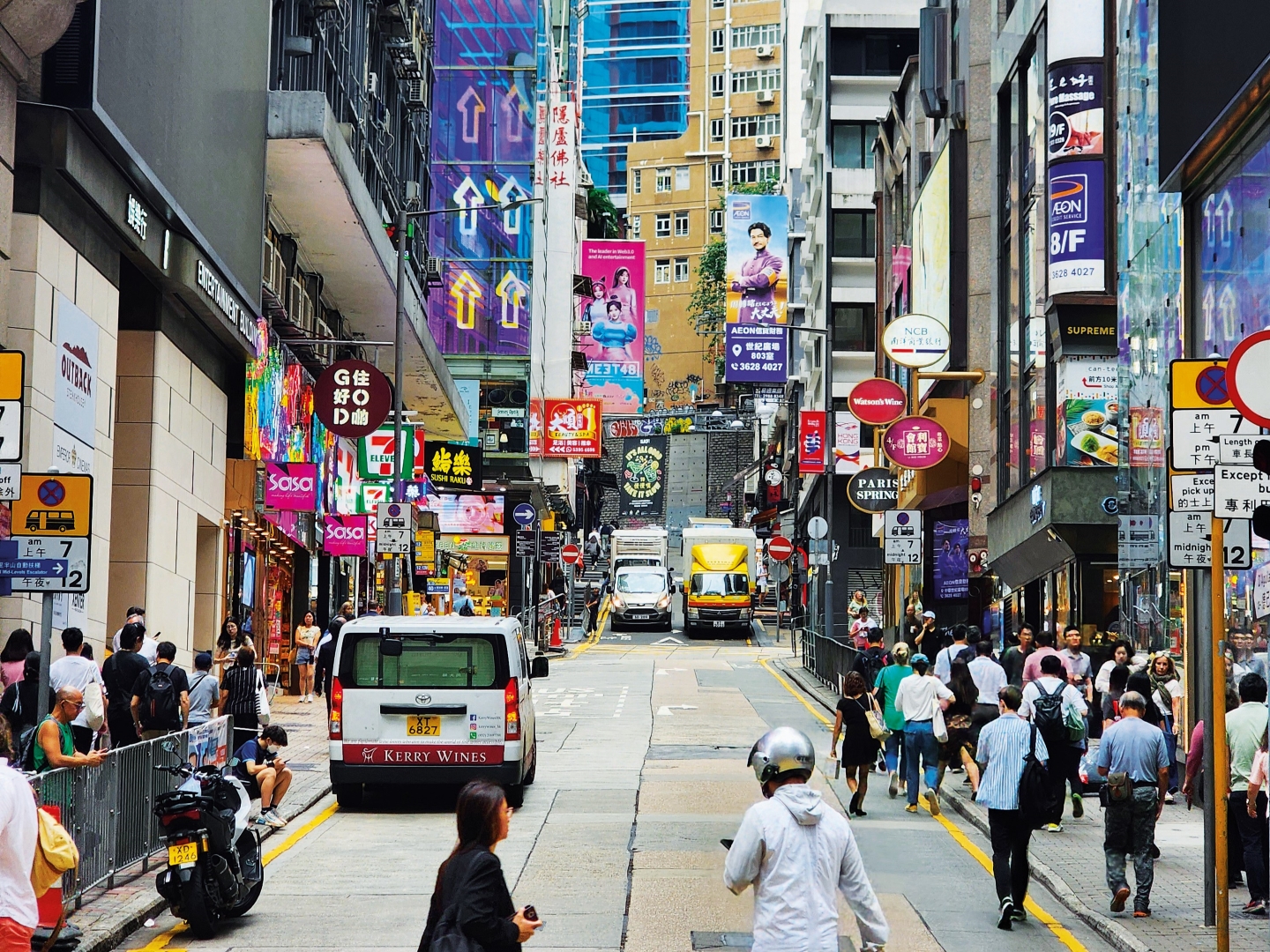
Present-day Hong Kong is a unique melding of Eastern and Western influences (All photos: Emily Yap/ The Edge Malaysia)
Stimulated by a breakneck pace, high-density living and the ding ding ding of trundling trams, Hong Kong’s cacophony is rarely ever silenced — an inexorable fate as one of the world’s leading tourist, industrial and financial centres.
Born out of the foreign clamour for trade with China, Hong Kong’s gritty character — moulded by the tussle between the British and Japanese — is distilled into the blood of its hard-working people. Centuries ago, as ships anchored around the Pearl River Delta, crewmen raced each other to deliver news, tea, opium, silk and more labour. Centuries later, the harbour’s visual image is animated by colossal freighters, a scene that reflects not only the region’s growth, but its enduring prominence as a springboard for trade and investment.
Present-day Hong Kong is a unique melding of Eastern and Western influences, evidenced by the food they serve, the films they produce and the colonial architecture they preserved. While the urban landscape of glass and steel towers may be the main draw for city slickers, the cobblestone streets are where Hong Kong’s dynamic dualism of old and new can be encountered. That said, you will need a pair of good walking shoes.
20240510_152216.jpg
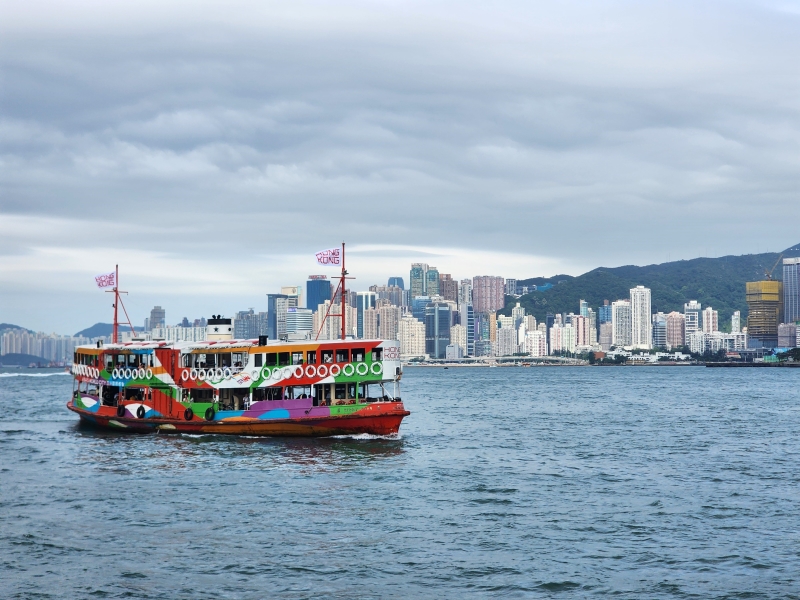
Local haunts
Asia’s World City wasn’t built in a day, but it is forged in the Central District, home to many financial institutions and large corporations, where the rush-hour crowd jostle tooth and nail to get to work on time. To avoid getting stifled by suits and briefcases on the MTR or Mid-Levels Escalators — the world’s longest outdoor covered escalator system runs for over 800m — take it easy in the mornings and head out after 9am.
Old Town is merely a stone’s throw away and exploring the neighbourhood is like entering a time capsule. Some of the earliest chapters of modern Hong Kong history unfolded in this district, where heritage buildings and traditional temples stand shoulder to shoulder with swanky boutiques and hip restaurants. But first things first — dim sum.
With a history of more than 80 years, the iconic Luk Yu Tea House is known for its old-school Cantonese fare. The three-storey building fills up quickly during lunch and dinner, but only a handful of local businessmen — a phone to their ear, always — linger in the late mornings. Slide into a booth and select your siew mai, har gow and pu’er on a tear-off menu and the white-jacketed servers will handle the rest. (Tip: If you cannot read Chinese, take a gamble and order the items the previous patron impressed on the menu.)
20240510_085515.jpg
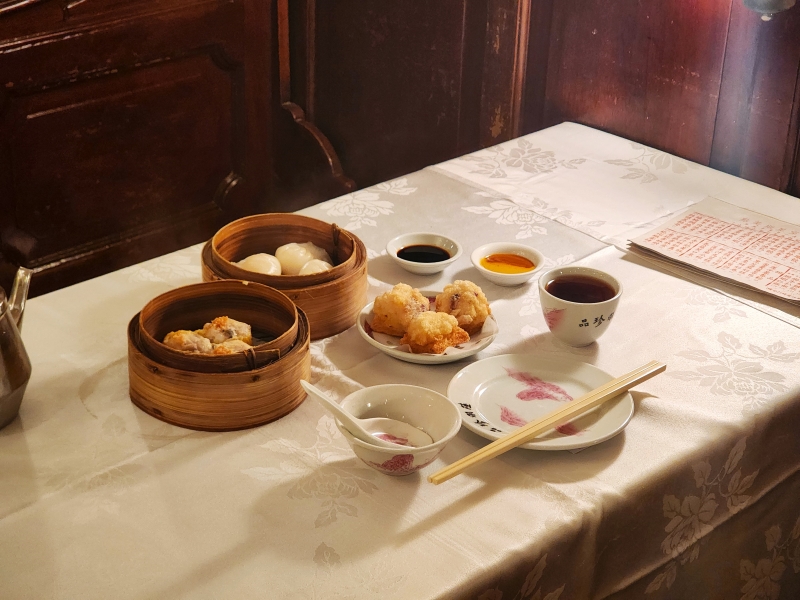
Bookmark Stanley Street mentally as Tai Ping Koon is just down the road. Originally from Guangzhou, the family-owned restaurant is one of the region’s pioneers of Western-Chinese-style cuisine. Its regulars, from dignitaries to TVB stars, often order the chicken wings in “Swiss sauce”. Funny story: The dish was named such due to a miscommunication in the early days. A Western customer’s exclamations of “Sweet! Sweet!” was misheard as “Swiss! Swiss!” and they thought the chef had somehow nailed an Alpine speciality. What the restaurant actually does well, though, is a soufflé, which is enormous and can easily be shared between four people.
Yung Kee Restaurant is located on the next street over. Its gilded facade can only be outshone by the glisten on the siew ngor (roasted geese) and other siew mei (roasted meats) hung in the windows tempting hungry passers-by. Nevertheless, you will not regret succumbing. The succulent siew ngor, with its crisp, paper-thin skin and glorious sheen, takes pride of place at every table. A bowl of steaming hot rice is all you need, really, but we highly recommend ordering the century egg as a refreshing palate cleanser. Silky smooth with no pungent taste, it can be paired with crisp pickled ginger shavings, which you can also buy bottled. Locals often celebrate special occasions and entertain international friends here, so advance booking is advised for weekend nights.
20240509_200330.jpg
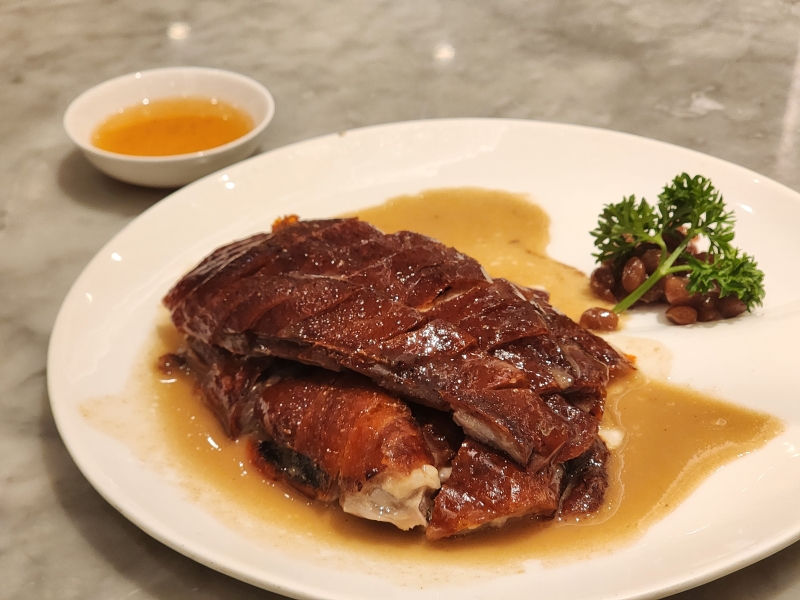
Hong Kong’s East-meets-West dining culture is best experienced at the no-frills cha chaan teng and dai pai tong. Founded in 1952, Lan Fong Yuen is one of the oldest and longest-running cha chaan teng in the city. According to locals, its famous “silk stocking milk tea” is still second to none, though the general consensus on the breakfast food is it has become a let down due to tourists overwhelming the eatery. Just grab a milk tea to go and save your valuable stomach space for something better.
The lemon honey bun (or chui chui as they call it) at Sing Heung Yuen is a perennial favourite, but so is the tomato beef broth with macaroni. This roadside stall is packed on weekends, but the turnover rate is high, so the waiting time is not too long. You will most likely need to share a table with strangers, but that is pretty standard for the dai pai tong. The ladies sprinting back and forth will also keep an eye out for the police — for those who have parked their cars on the roadside.
Mido Café has garnered a lot of attention for serving as a backdrop for several classic Hong Kong shows such as The World of Suzie Wong (1960) and TVB drama Street Fighters (2000). Its stained-glass windows and mosaic tiles on the floor and ceiling take diners back to the 1950s. Here, the French toast and pineapple bun are must-orders.
20240510_092416.jpg
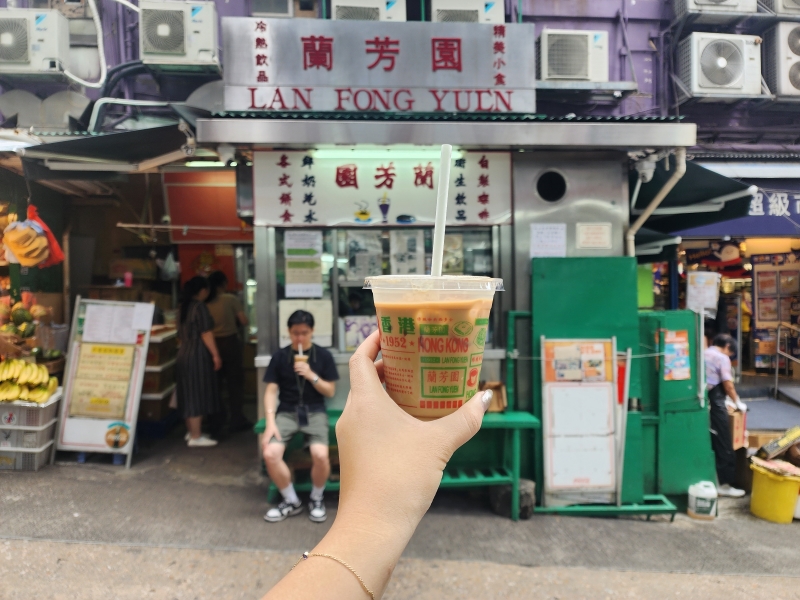
Memory lane
The stone slabs spanning Pottinger Street, named after the first governor of Hong Kong, may make your stroll feel more like a trudge, but the pavement was laid irregularly for a reason. As some sections were particularly steep, the uneven road made it easier for merchants to climb while also diverting rainwater. The surrounding area gives a good sense of what the lives of its early dwellers would have been like, though the stalls that line either side of the street used to sell household goods and services instead of festive items and souvenirs.
The stone slabs lead directly to the Tai Kwun Centre for Heritage and Arts, a complex with 16 buildings that housed the former Central Police Station, Central Magistracy and Victoria Prison. Repurposed as galleries, studios and theatres, the hillside compound is styled as an urban lifestyle oasis, with open “courtyards” that encourage lingering. A Bruce Nauman show is currently on, but lovers of contemporary art can check out its website (taikwun.hk) for the latest programmes.
Hollywood Road is just 15 minutes away if shopping for antiques, contemporary art and vintage clothes is up your alley. Make a pit stop at Halfway Coffee, a popular café that serves beverages in traditional ceramic ware, for a quick power up. Then, saunter along Possession Street, a historical location that marks the beginning of Britain’s 156-year rule.
tai_kwun_centre.jpg
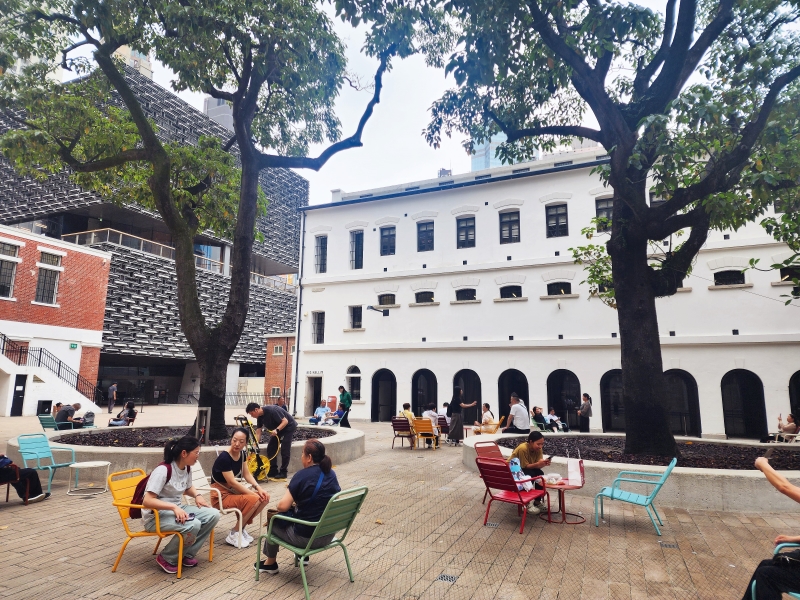
Cheers to that
After hours, a younger crowd takes over and neon lights transform the area down to Lan Kwai Fong into a dizzying party hub. Coa should most definitely be your first port of call but, heads-up, the walk-in only bar is notoriously hard to get in. What you can do is head there early, download its app, join the queue and monitor your progress during dinner. If lady luck is on your side, reward yourself with a refreshing Bitter Melon Collins before easing into the clarified Coconut Milk Punch, a complex and stimulating concoction with tamarind, Matusalem Gran Reserva rum, Plantation OFTD rum, dry sherry, coffee, coconut cream, pineapple, lemon, cardamom and salt.
Then, hop over to Bar Leone — No 1 on Asia’s 50 Best Bars — helmed by Lorenzo Antinori, the former beverage manager of Four Seasons Hong Kong. The bar takes on the warmth of his hometown Rome with a dash of humour. Amusing artworks with pop culture references litter the walls and you can play arcade games in the bathroom while you wait your turn. The establishment proudly claims that it offers the cheapest espresso in Hong Kong, but its frozen cappuccino, especially on a hot, humid night, will give you the jolt you need.
Cap your evening off at The Diplomat, a must-visit for cleverly crafted cocktails. The classic Whisky Sour and Gibson are prepared to perfection, but don’t be shy to ask for an off-menu drink. For a late-night supper that will sober you right up, order the famous wagyu burger, hailed as one of, if not the best in town. The mean Irish coffee may also do the trick.
coa.jpg
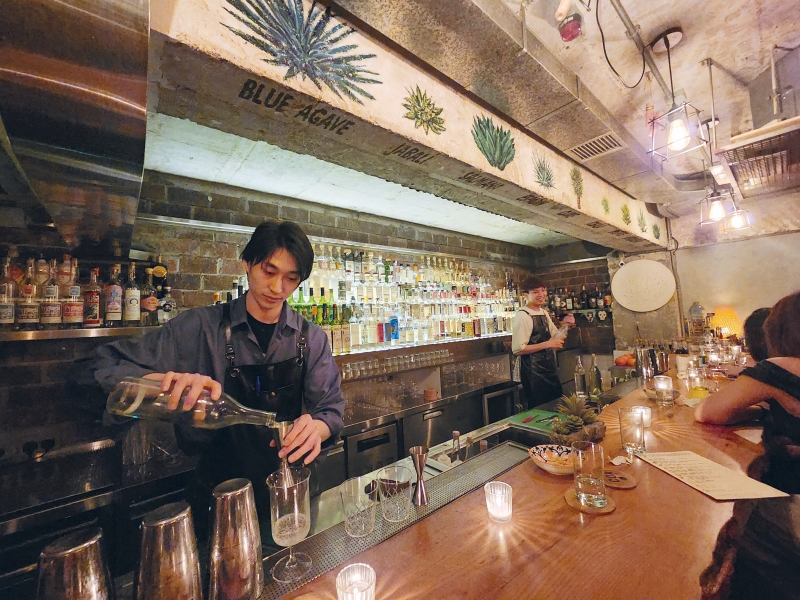
Views + vistas
“You’ve not been to Hong Kong if you have not gone up to The Peak,” says a local, arms akimbo. If your goal was to avoid touristy spots, let this be an exception. It is more time-efficient to take a cab up and the tram down because of the snaking lines at the foot of the hill. However, if you are not clocking in as many steps as you should, try walking.
The uninterrupted sight of Hong Kong Island, Kowloon and further afield will make your efforts worth it. Zooming out from the dense city, the bird’s eye view allows one to admire it in its entirety. A majority of Hong Kong’s land is made up of country parks and nature reserves inhabited by diverse wildlife. For a more intense workout, avid hikers often head to Dragon’s Back Mountain or Tai Mo Shan.
The Peak Tram, one of the world’s oldest and most famous funicular railways, is so steep that passengers often experience an optical illusion whereby the piercing vertical buildings seem to be closing in. For the best views going down, scramble for the bottom coach and sit on the left side. It is the only one where the chairs face downwards, so do be careful not to fall off.
the_peak_2.jpg
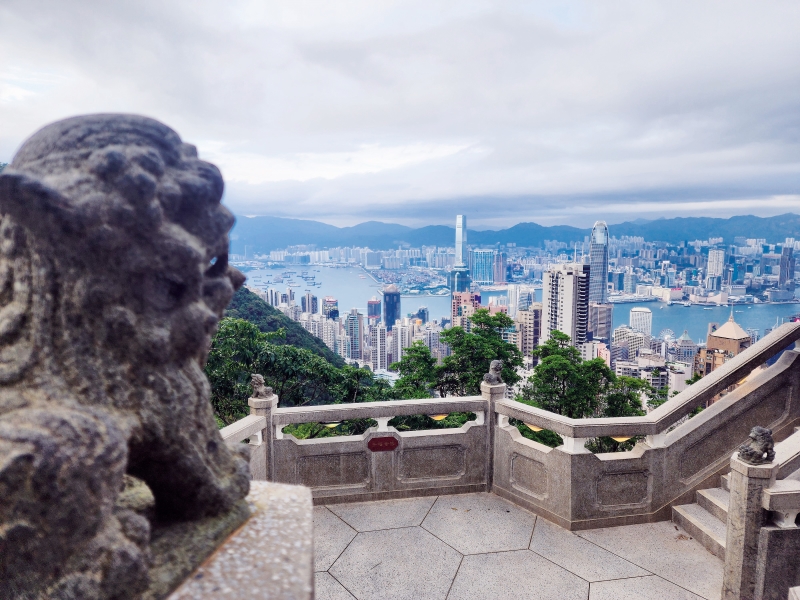
Art + culture
Staying at a strategic location, such as the Mandarin Oriental Hong Kong, allows the most convenience when getting around. Most of Central’s hotspots are within walking distance and if there is a concert being held at Central Harbourfront — Taiwanese rock band Mayday was performing during our stay — you will get a decent view of the event.
The Star Ferry to the West Kowloon Cultural District is only 15 minutes away. The city’s new quarter is one of the largest and most ambitious cultural projects in the world with stellar art galleries, theatres and museums built on 40ha of reclaimed land.
The Hong Kong Palace Museum opened in 2022 on the 25th anniversary of the handover of the territory to Beijing. It showcases treasures from the Forbidden City’s Palace Museum and other important cultural institutions around the world.
k11_musea.jpg
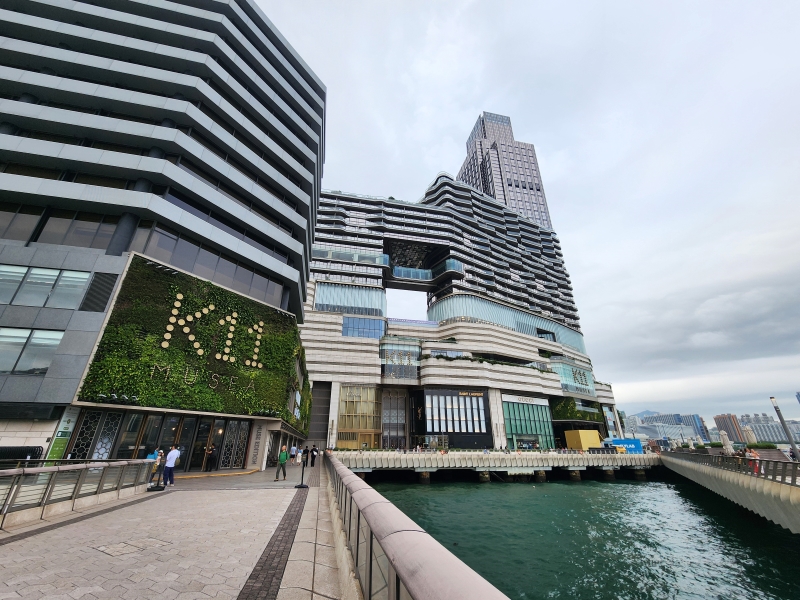
A keystone project for the new district, M+ is dedicated to contemporary visual art culture, featuring collections that span the 20th and 21st centuries. The expansive museum houses 33 galleries, three cinemas, a learning hub, rooftop garden, research centre and more. Designed by Herzog & de Meuron in partnership with TFP Farrells and Arup, the building itself, composed of a podium and a slender tower that fuses into the shape of an upside-down “T”, is a work of art.
Visitors can also check out Art Park, a long waterfront promenade perfect for picnics and strolling. Open-air performances, exhibitions and other events are often held at the pet-friendly ground. A convoy of gourmet food trucks are parked alongside multiple restaurants and cafes, so fuelling up after a SmartBike ride is a non-issue.
Take the MTR to Tsim Sha Tsui for spectacular sunset views at the Avenue of Stars. As darkness envelopes the city, see the skyline glitter to the tune of the Symphony of Lights at 8pm. Then, head into K11 Musea, a retail landmark designed by a roster of more than 100 international architects and artists, for dinner and, of course, more shopping.
This article first appeared on June 24, 2024 in The Edge Malaysia's 'Loong Report', which commemorates 50 years of Malaysia-China relations.


